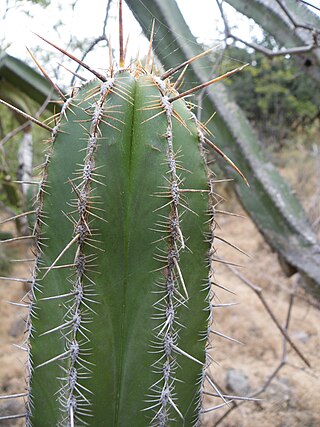
Escontria is a genus of cactus. The only species is Escontria chiotilla, the chiotilla or jiotilla.

The lava cactus is a species of cactus, Brachycereus nesioticus, the sole species of the genus Brachycereus. The plant is a colonizer of lava fields – hence its common name – where it forms spiny clumps up to 60 cm (24 in) tall. Its solitary white or yellowish white flowers open in the daytime. It is endemic to the Galápagos Islands.

Oroya is a genus of cacti, native to Peru. The genus is widespread in the Peruvian Andes.
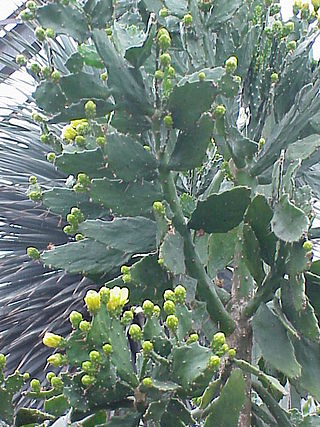
Brasiliopuntia is a genus in the cactus family, Cactaceae. It contains only one species, Brasiliopuntia brasiliensis.
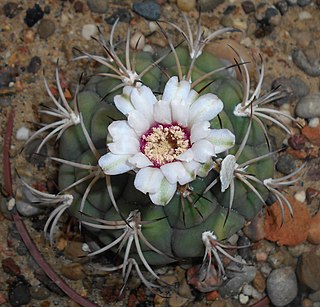
Gymnocalycium anisitsii is a globular cactus belonging to the family Cactaceae. The specific epithet honors the Hungarian pharmacist Dániel Anisits J. (1856-1911).

Leucostele terscheckii, commonly known as the cardon grande cactus or Argentine saguaro, is a large cactus native to South America and popular in cultivation.

Soehrensia thelegona is a species of cactus in the Soehrensia genus.
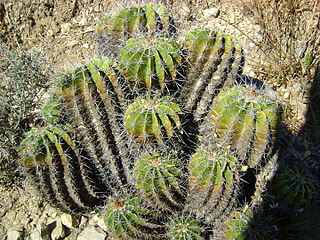
Ferocactus flavovirens is a species of Ferocactus from Mexico.

Weberbauerocereus weberbaueri is a species of Weberbauerocereus from Peru.

Echinopsis aurea, is a species of Echinopsis found in Argentina.

Lobivia ferox, is a species of Lobivia found in Bolivia and Argentina.

Lobivia pampana is a species of Lobivia found in Peru.

Acanthocalycium rhodotrichum is a species of Acanthocalycium found in Argentina, Bolivia, Brazil, Paraguay, and Uruguay.

Xiquexique gounellei is a species of plant in the genus Xiquexique of the cactus family. Common names include "Alastrado", "Chique-Chique", "Xique-Xique" and "Xique-Xique das Pedras".
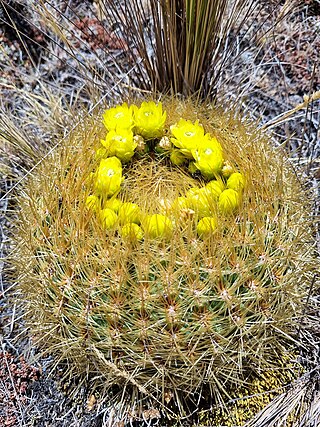
Oroya borchersii is a species of cacti, originating from Peru

Oreocereus leucotrichus is a species of cactus native to Peru and Chile.
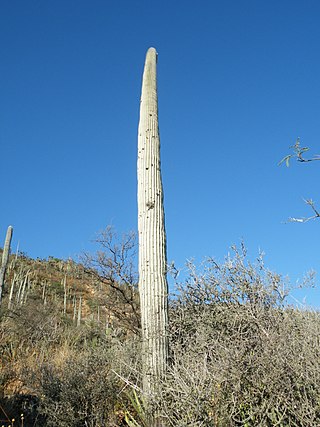
Cephalocereus columna-trajani is a species of cactus from Mexico.

Borzicactus sepium is a species of Borzicactus found in Ecuador.

Ferocactus uncinatus is a species of Ferocactus found in Mexico and United States in Texas.

Ferocactus mathssonii is a species of Ferocactus found in Mexico.





















